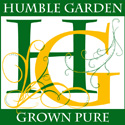
Radish leaf.
To a plant, water management is personal, very personal.
Capturing and managing the use or loss of water is not an idle activity, its not passive. For the plant it is hardwired. Just as we have arteries and veins to conduct blood, our little ocean, throughout our bodies, so too does the plant have tubing to route water across it’s body plan.

Corn sprout.
Plant physiology is fascinating and I may explore it’s complexities further later but today I am going to tell you one simple thing – those water routes in the plant are composed of Xylem cells. You may have heard of phloem cells, they make the tubing that routes the food or carbohydrate laden water.

This is a triptych of stained xylem cells from a ficus plant. (Photos of vessels at (Ficus sp). taken at sept 2002 in university of Sidi Bel Abbes/Algeria. Shoots are treated in HCl (15N,40mn) solution,then stained with Toluidine-Bleu (5%). All photos have been taken under the Carl Zeiss microscope, by Youssef Bouterfes for the Wikipedia Project. This is a creative commons photo from the Wikipedia.)

Collard greens.
As in my pictures, you may see leaves that have these ordered arrays of water droplets. Some of these may be the result of water collection as mediated by the architecture of the leaf or may be the release of water from a water-logged plant through hydathodes (a process called guttation).
“At night, transpiration usually does not occur because most plants have their stomata closed. When there is a high soil moisture level, water will enter plant roots, because the water potential of the roots is lower than in the soil solution. The water will accumulate in the plant creating a slight root pressure. The root pressure forces some water to exude through special leaf tip or edge structures, hydathodes, forming drops. Root pressure provides the impetus for this flow, rather than transpirational pull.
Guttation fluid may contain a variety of organic compounds, mainly sugars, and mineral nutrients, and potassium.[1] On drying, a white crust remains on the leaf surface.” Source

I borrowed this micrograph, showing a hythode, from the UW-Madison BotWeb
image clearinghouse. There is so much there to see and learn about!
“Hydathodes, often found at the end of vascular bundles, are other derivatives of stomatal complexes. Their guard cells cannot be closed, unlike those in normal stomatal complexes. Water secretion by the hydathodes is called guttation; salts, sugars, and organic compounds dissolved in the guttation water crystalize on evaporation, forming a white powdery substance.” Source

Droplets on collard sprouts.
Take some time one sunny morning, after a stretch of wet days, and go into your garden and see these drops for yourself!

Carrot tops.
Learn More:
- Plant Structure from MJ Farabee at Maricopa College
- Guttation on the Wiki















Hi Nika,
I’m pretty new to this blog thing, so I couldn’t figure out how to comment on your “pest” section. I found a pretty good resource for information for organic pest control, perhaps it will be helpful to you.
http://www.attra.org/publication.html#pest
There are a variety of articles on their site – hope you enjoy them and can make use of them!
Your garden setup looks wonderful and your photos are excellent!
Happy Gardening!
Ingrid
Ingrid: thanks so much for that info! I will definitely go take a peek. Thanks so much for stopping by!
[…] (Learn about these droplets on the collard green above at Humble Garden) […]